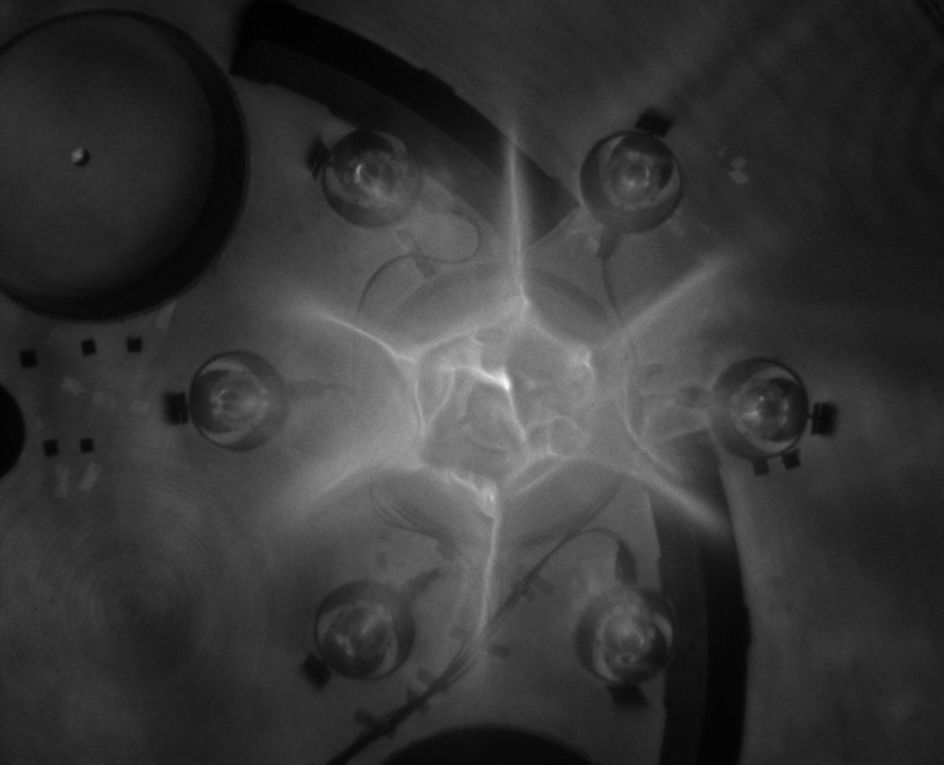Assembly of the Plasma Liner Experiment (PLX) at Los Alamos National Laboratory is well underway with the installation of 18 of 36 plasma guns in an ambitious approach to achieving controlled nuclear fusion (Figure 1). The plasma guns are mounted on a spherical chamber, and fire supersonic jets of ionized gas inward to compress and heat a central gas target that serves as fusion fuel. In the meantime, experiments performed with the currently installed plasma guns are providing fundamental data to create simulations of colliding plasma jets, which are crucial for understanding and developing other controlled fusion schemes.
Most fusion experiments employ either magnetic confinement, which relies on powerful magnetic fields to contain a fusion plasma, or inertial confinement, which uses heat and compression to create the conditions for fusion.
The PLX machine combines aspects of both magnetic confinement fusion schemes (e.g. tokamaks) and inertial confinement machines like the National Ignition Facility (NIF). The hybrid approach, although less technologically mature than pure magnetic or inertial confinement concepts, may offer a cheaper and less complex fusion reactor development path. Like tokamaks, the fuel plasma is magnetized to help mitigate losses of particles and thermal energy. Like inertial confinement machines, a heavy imploding shell (the plasma liner) rapidly compresses and heats the fuel to achieve fusion conditions. Instead of NIF’s array of high-power lasers driving a solid capsule, PLX relies on supersonic plasma jets fired from plasma guns.
